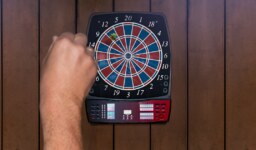Are you confused by the numbers on your electric toothbrush? Wonder what they signify and how they affect oral health?
In this blog post, we’ll answer these questions to understand each number’s significance better and provide an overview of electric toothbrushes and why they’re essential for maintaining healthy teeth and gums.
By the end, you’ll have gained insight into using your electric toothbrush more effectively for optimal oral hygiene results – so let’s get started!
Overview of Electric Toothbrushes and Their Numbering
Electric toothbrushes are battery-operated devices that enable users to brush their teeth more effectively than manual brushes.
Each model vibrates or rotates at different speeds depending on what type you purchase; most models feature programmed settings that determine the rate and motion of the bristles for greater control over their brushing experience and a more prolonged period of brushing cleanliness.
Furthermore, some electric toothbrushes have additional features like timers or pressure sensors, which assist users in brushing correctly.
What Do the Numbers on Electric Toothbrushes Mean?
The numbers found on electric toothbrush packaging indicate various levels of intensity or speed a user can choose when using their device.
Generally, lower numbers indicate slower speeds, while higher ones indicate faster ones (with some exceptions).
It’s important to remember that not all brushes will have identical values; brands may use different coding systems to denote different degrees of vibration frequency or intensity.
Some brands offer five levels while others only provide three; however, all should still be numbered according to increasing intensity/speed as indicated on packaging labels.
Explaining the Different Numbers on Electric Toothbrushes
The lowest number on an electric toothbrush typically indicates a gentle brushing setting, ideal for those with sensitive teeth or gums.
This setting produces slight vibration and makes fewer rotations per minute (RPMs) than other settings.
For instance, Philips Sonicare DiamondClean Smart 9300 toothbrush has a low setting of 8,000 RPM, while its highest level is around 62,000 RPM.
What is the Highest Number on an Electric Toothbrush?
The highest number on an electric toothbrush corresponds to a more vigorous brushing setting which can remove plaque and debris from teeth more effectively than lower options.
What Are Other Numbers Common on Electric Toothbrushes?
Most electric toothbrushes will feature multiple speed settings between their lowest and highest settings – typically 8,000-62,000 RPMs, depending on which model you own.
These in-between speeds give users more control over their brushing experience by enabling them to decide how hard or soft they want their strokes to be without constantly switching between different modes.
Additionally, some models may offer specialty settings like gum massage or whitening modes, which produce unique vibrations to promote gum health or remove surface stains from teeth.
These custom modes usually come with their numbers, so it’s easy to distinguish them from standard methods at first glance!
Health Benefits of Different Settings on Electric Toothbrushes
Lower settings on an electric toothbrush are ideal for sensitive teeth and gums. The gentler vibrations from the brush head help remove plaque without causing discomfort or pain when brushing, making it an excellent choice for people experiencing pain when brushing and those suffering from gum recession or other oral health issues that need special attention.
Moreover, slower brushing speeds ensure all tooth surfaces are thoroughly cleaned, decreasing your risk for dental cavities caused by plaque buildup.
How High Settings Benefit Your Oral Health
Higher settings on an electric toothbrush offer more effective cleaning power than lower ones, making them great for removing tough plaque buildup around the gum line and in hard-to-reach places within your mouth.
Vibration helps reduce bacteria in these hard-to-reach places and may be especially helpful if you have deep grooves that need extra attention during brushing sessions.
In addition, those with braces may find high settings helpful in dislodging food particles stuck between brackets and wires or scraping away stubborn tartar around orthodontic appliances.
What Are Other Settings Beneficial for Your Oral Health?
Many modern electric toothbrushes come equipped with features like timers and pressure sensors that can enhance your oral hygiene routine by giving feedback about how long to brush each area of the mouth or alerting you if there’s too much force being used, avoiding damage to enamel or gum recession over time.
Plus, some models even offer whitening modes which use higher levels of power quickly but gently to remove surface stains from enamel without wearing down its protective layer.
It ensures your smile remains bright and healthy-looking without wearing down its protective layer too much.

Conclusion
Electric toothbrushes are an excellent way to ensure optimal oral health and hygiene. Each number on the brush indicates how vigorously or gently it will clean, with lower numbers representing gentler cleaning, while higher numbers provide more vigorous brushing action.
Low settings work best for sensitive teeth, while high ones help remove plaque and tartar buildup.
Ultimately, you must decide which setting best suits your needs – use this guide as a starting point and experiment until you find one that works for you!
Additionally, don’t forget to visit your dentist regularly so they can provide personalized advice on maintaining good oral hygiene habits alongside overall well-being.




